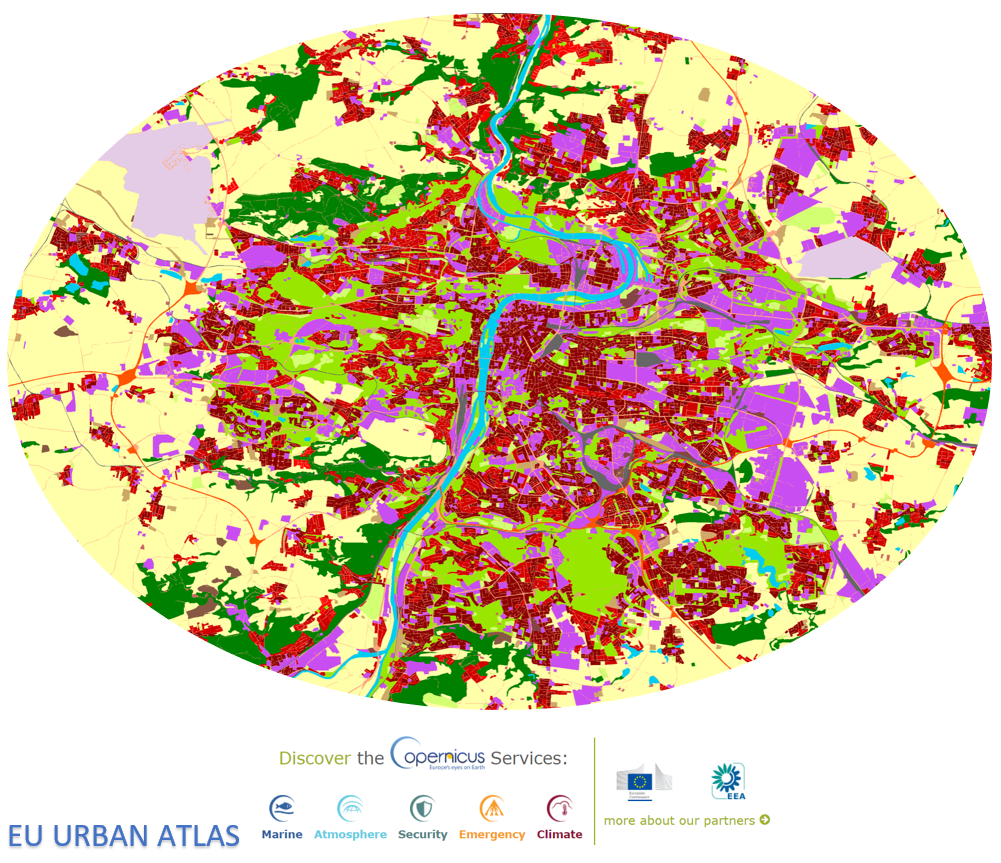Advanced integration of digital ground and satellite technologies and data for buildings and urban management
Socio-economics and environmental implications and technological solutions

Abstract
The exponential increase of human population, and the increasing urbanization phenomena, are concurrent causes of enhancing criticalities for contemporary urban management. Those concurrent factors are reaching levels of such complexity that often managers and policy decision makers are forced to focus on pure maintenance of services, structures, and networks, for safeguarding citizens safety, sometimes neglecting quality of life and well-being, or the needed redundancy of services and networks/grids.
ULTERIORE APPROFONDIMENTO (TESTO ESTESO)
The exponential increase of human population and the increasing urbanization phenomena, are concurrent causes of enhancing criticalities for contemporary urban management. Those concurrent factors are reaching levels of such complexity that often managers and policy decision makers are forced to focus on pure maintenance of services, structures, and networks, in order to guarantee citizens safety, sometimes neglecting quality of life and general well-being, such ensuring their pleasantness, or the needed redundancy of services and networks/grids. An stronger Interdisciplinary approach seems an answer to such Urban complexity scenario, connecting environmental quality, structures and services efficiency, and citizens quality of life. Those factors and conditions are not related in a linear sequence, influencing each other in a mutual cause/effect relationships and creating an exponential multiplication of variables, with very dissimilar and sometimes contradictory scenarios, unfolding the XXI century urban fragilities, namely: extreme climatic events, demographic and migratory challenges, and more recently the health challenges related to pandemics. An effective response to the complexity of contemporary urban management issues, seems to be achieving the deepest possible knowledge of the metabolism of urban areas, in order to understand the technical and structural complexity, together with social and economic factors. However, accomplishing urban material and immaterial needs and well-being, requires innovative management approaches and technological tools, in order to provide smart solutions for cities and human wellness through integrated management systems, leading to the identification of innovative techniques and systems for the future of our cities, acquiring data and information from any available source and linking technological systems, digital tools, and smart grids, in order to develop Digital Twin Models (DTM) for built environments.
PUBBLICAZIONI
Atto di convegno in volume: Applying Digital Twin Models to Built Environment: Methodological Approaches and Comparative Experiences / Cinquepalmi, Federico; Cumo, Fabrizio; Vokshi, Armand. - (2023), pp. 31-32. (Intervento e abstract presentati al convegno Albania nel Terzo Millennio. Architettura, città, territorio tenutosi a Tirana (Albania)).
ALTRI ESITI
Convegno internazionale: Albania nel terzo millennio (Tirana 8 marzo 2023 e Roma, 18 maggio 2023) – membro del consiglio scientifico e relatore con intervento dal titolo: “Applying Digital Twin Models to Built Environment: Methodological Approaches and Comparative Experiences”.

Tipo di Ricerca
Ricerca Sapienza
Responsabile
Federico Cinquepalmi
Anno
2022
Struttura
Dipartimento di Architettura e Progetto (DiAP)
Componenti del gruppo di Ricerca
STRUTTURATI:
Michele Conteduca; Francesca Giofrè; Elisa Pennacchia; Antonino Saggio
MEMBRI ESTERNI:
Giuseppe Orsini (Dottorando del Dottorato in Energia e Ambiente); Virginia Adele Tiburcio (Dottoranda del Dottorato di Ingegneria dell’Architettura e dell’Urbanistica) Luca Gugliermetti (Assegnista Di Ricerca Enea); Laura Candela (Dirigente Tecnologo Asi); Andrea Taramelli (Professore Associato (Geo/04) Iuss – Pavia); Cecilia Romana Costa (Professore Ordinario (Sps/08) Università Di Roma3); Saverio Mecca (Professore Ordinario (Icar/11) Università Di Firenze); Maria Castellani (Copernicus Academy (Ispra))
ALTRI COMPONENTI:
Andrea Ariano (Architetto - Professionista Esterno); Gaetano De Francesco (Architetto - Professionista Esterno)
Settore
Tecnologia
ERC
PE8_3 - Civil engineering, architecture, maritime/hydraulic engineering, geotechnics, waste treatment; PE8_9 - Production technology, process engineering; SH3_13 - Digital social research
Keywords
Technology Management, Building Architecture, Climate change, Big Data, Sociology of the territory
Link di approfondimento
Pagina web Sapienza Convegno internazionale "Albania nel terzo millennio"